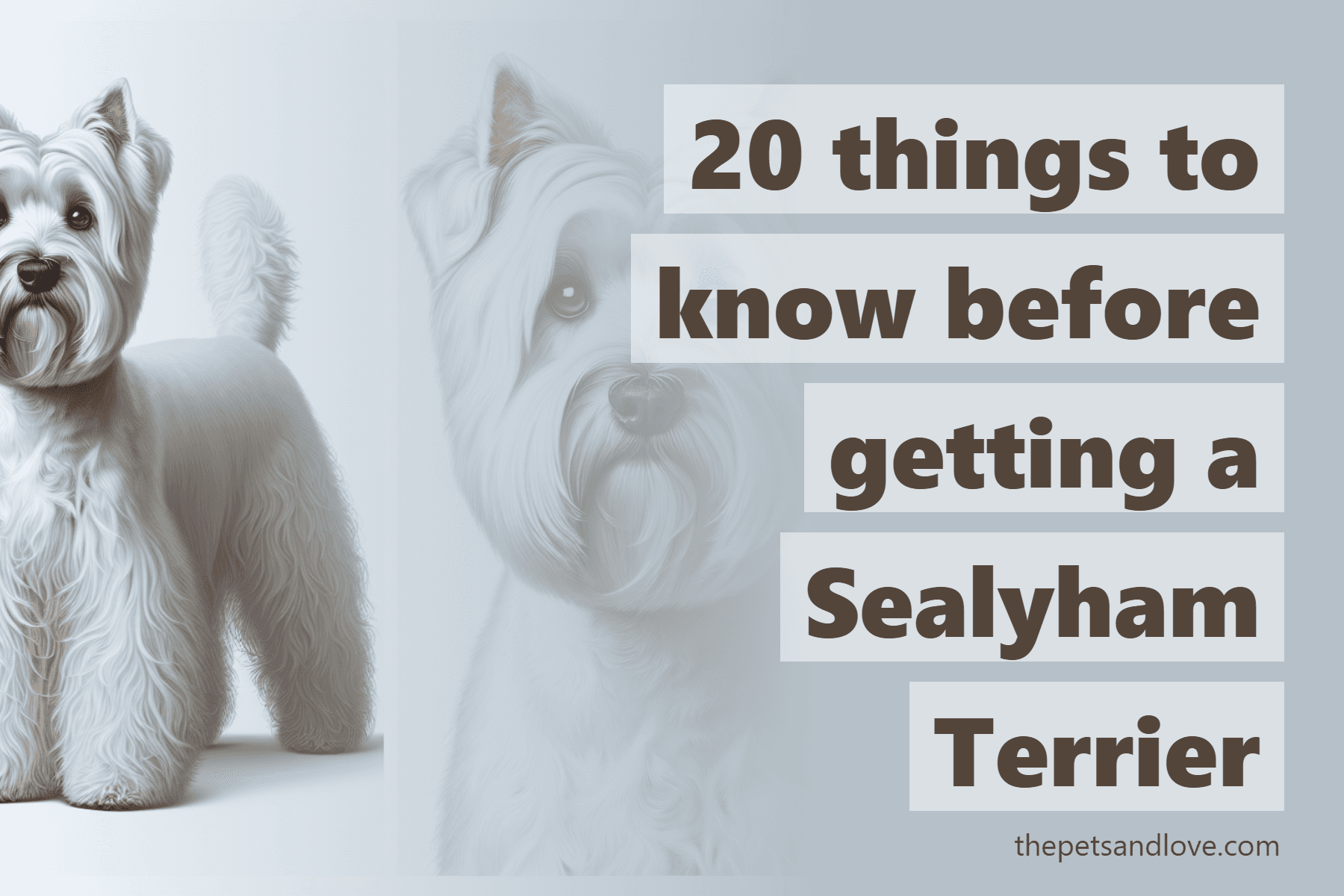20 things to know before getting a Sealyham Terrier

Thinking about getting a Sealyham Terrier? Here’s what you really need to know — from someone who’s spent a lot of time around terriers and knows exactly what kind of mischief (and love!) they bring into a home.
First off: Sealyham Terriers are rare
Sealies used to be popular in the UK and the U.S., especially in the show world. But these days, they’re one of the most endangered native breeds. So if you get one, you’re not just getting a pup — you’re helping preserve a piece of canine history.
Big personality, small package
Sealies were originally bred in Wales in the mid-1800s by Captain John Tucker Edwards to hunt otters, badgers, and foxes. That hunting drive hasn’t disappeared, so don’t be surprised if your Sealyham wants to chase squirrels, birds, or even your cat (early socialization helps here!).
But unlike many terriers, they’re not bouncing off the walls all day. In fact, they’ve earned the nickname “the couch potato of terriers.” They love their walks and playtime, but they’re just as happy curled up next to you afterward.
A good family dog — with the right setup
Sealies are loyal, affectionate, and funny. They bond closely with their families and can do great in apartments or houses. That said, they’re better suited for families with older kids. Young children can be too much for them, especially if they’re rough or unpredictable. Like many terriers, Sealies can be possessive of toys or food — not ideal for toddlers who like to grab.
Independent thinkers (aka a bit stubborn)
Sealies are smart, but they’ve got that classic terrier streak of independence. If you’ve got a sense of humor and patience, you’ll do just fine. Positive reinforcement is key — treats, praise, and play go a long way. But don’t let their clownish behavior fool you. They need clear boundaries, and you’ll need to be consistent.
Training tip: Don’t laugh when they’re being naughty. They’ll take it as encouragement!
Socialization is a must
Start early — with people, dogs, cats, noises, everything. A well-socialized Sealyham is friendly, balanced, and much less likely to act out. Without it, they can be aloof or even snappy with strangers or other dogs.
Grooming: Not low-maintenance
That beautiful white coat doesn’t care for itself. You’ll need to brush your Sealyham several times a week to prevent mats, especially on the beard, legs, and chest. Many owners opt for professional grooming, especially hand-stripping if you want to maintain the traditional wiry coat.
Also on your grooming list:
- Regular ear cleaning (those heavy ears can trap moisture)
- Weekly teeth brushing
- Nail trims once a month
Start handling your pup early so they get used to the routine!
Health-wise, they’re pretty sturdy
Sealies are generally healthy, but like with any breed, choose a responsible breeder. Ask about eye issues like lens luxation or retinal dysplasia, and make sure the parents have been tested. Allergies and ear infections can happen, but with good care, they’re manageable.
Exercise needs: Moderate
They don’t need a ton of exercise, but they do need daily walks and some playtime to stay happy. A bored Sealyham is a mischievous Sealyham. And while they can stay home alone without destroying the place, they still need plenty of attention when you’re around.
They can live with other pets (if raised right)
Sealies can get along with cats, dogs, even birds — if you socialize them early and supervise. But remember, they’re terriers. They won’t back down from a challenge, even from a much bigger dog. That confidence can get them into trouble if you’re not careful.
Food and weight management
They do fine on quality dog food, but watch their portions — they can pack on pounds quickly. If you’re showing your dog, avoid food dyes, which can stain their white coat. Treats are great for training but go easy.
A few final thoughts
Sealies are funny, loyal, and surprisingly mellow for a terrier. They’re not for everyone — grooming takes time, training takes patience, and socialization is non-negotiable. But if you’re up for it, you’ll get a dog that’s full of heart, humor, and character.
They’ll make you laugh, challenge you a little, and love you a lot. If that sounds like the kind of companion you want, the Sealyham Terrier might just be the perfect match.
Take the Quiz
Is a Sealyham Terrier Right for You?
The Sealyham Terrier is a clever and spirited little dog with a big personality. Discover if this charming and feisty breed is your perfect match by taking the quiz! Answer all questions below to discover your compatibility score and get personalized insights.
Question #1: What is the main reason you want a dog?
Question #2: How active is your lifestyle?
Question #3: How much time can you dedicate to your dog daily?
Question #4: What best describes your home environment?
Question #5: What size dog do you prefer?
Question #6: What personality traits do you want in your dog?
Question #7: How much grooming can you handle?
Question #8: Who else lives with the dog?
Question #9: Is this your first dog?
Please answer all 9 questions to see your results
